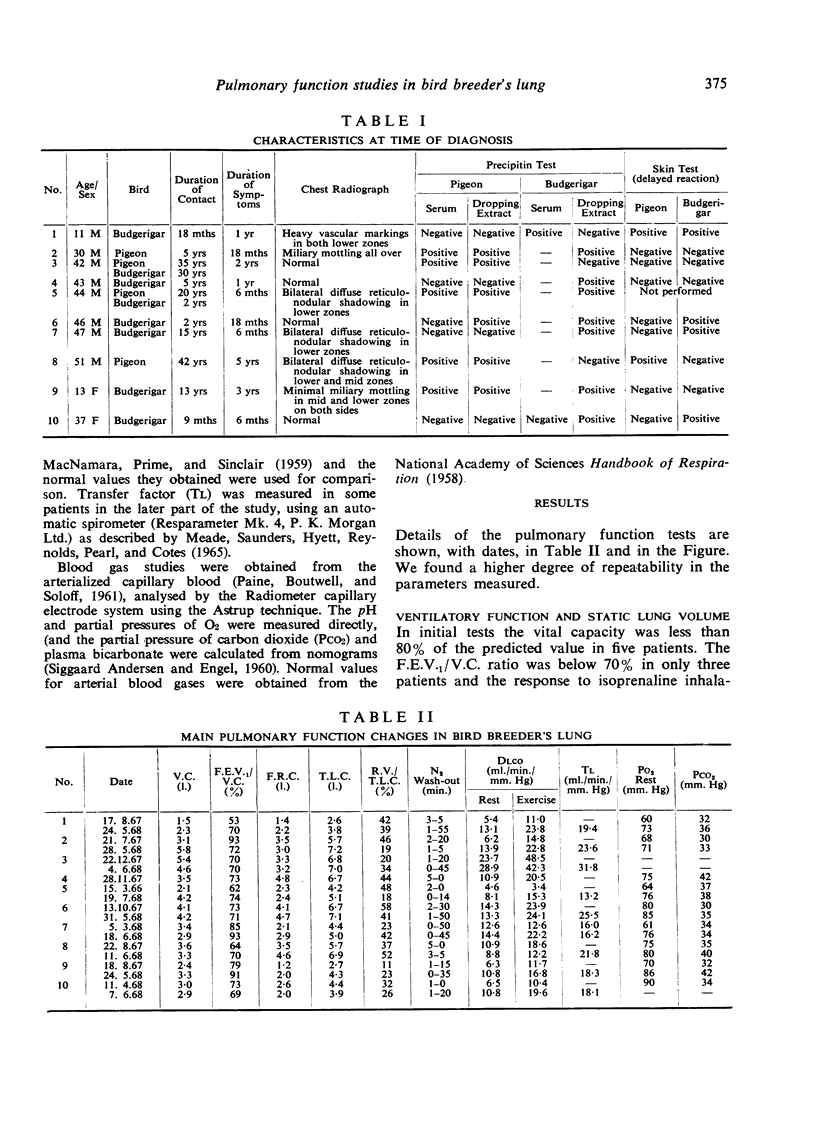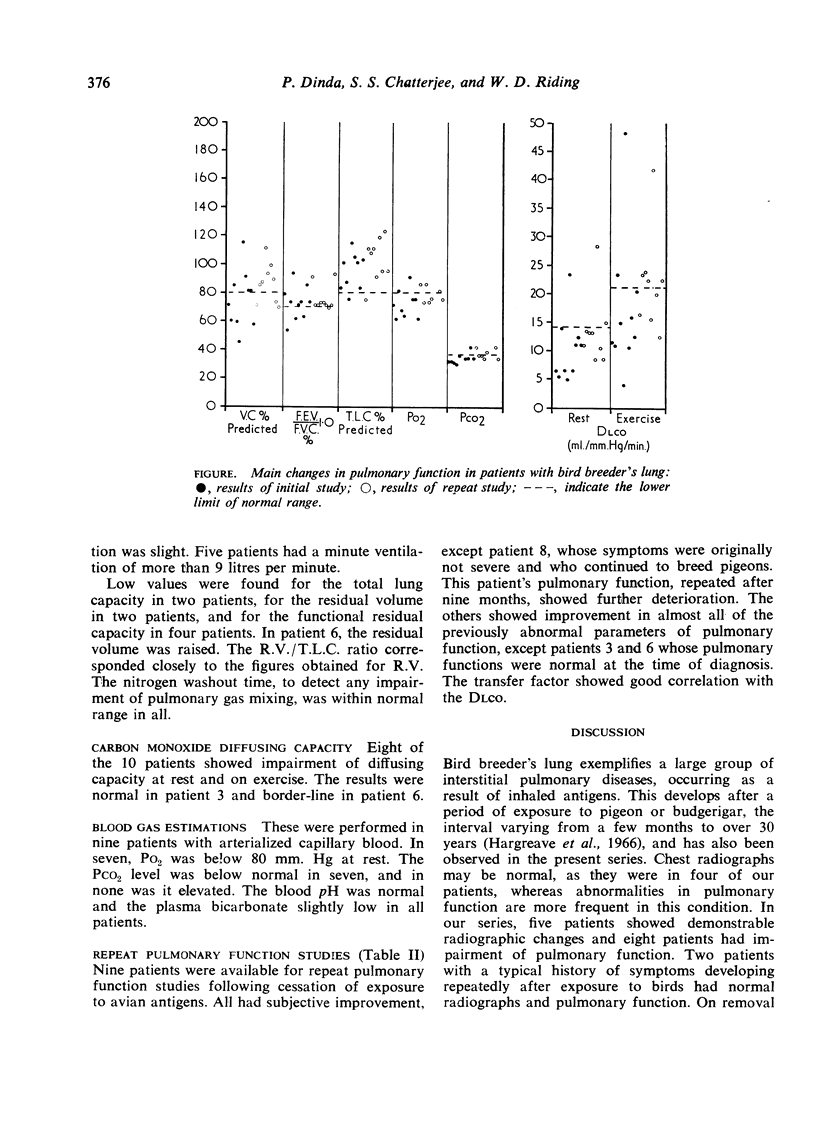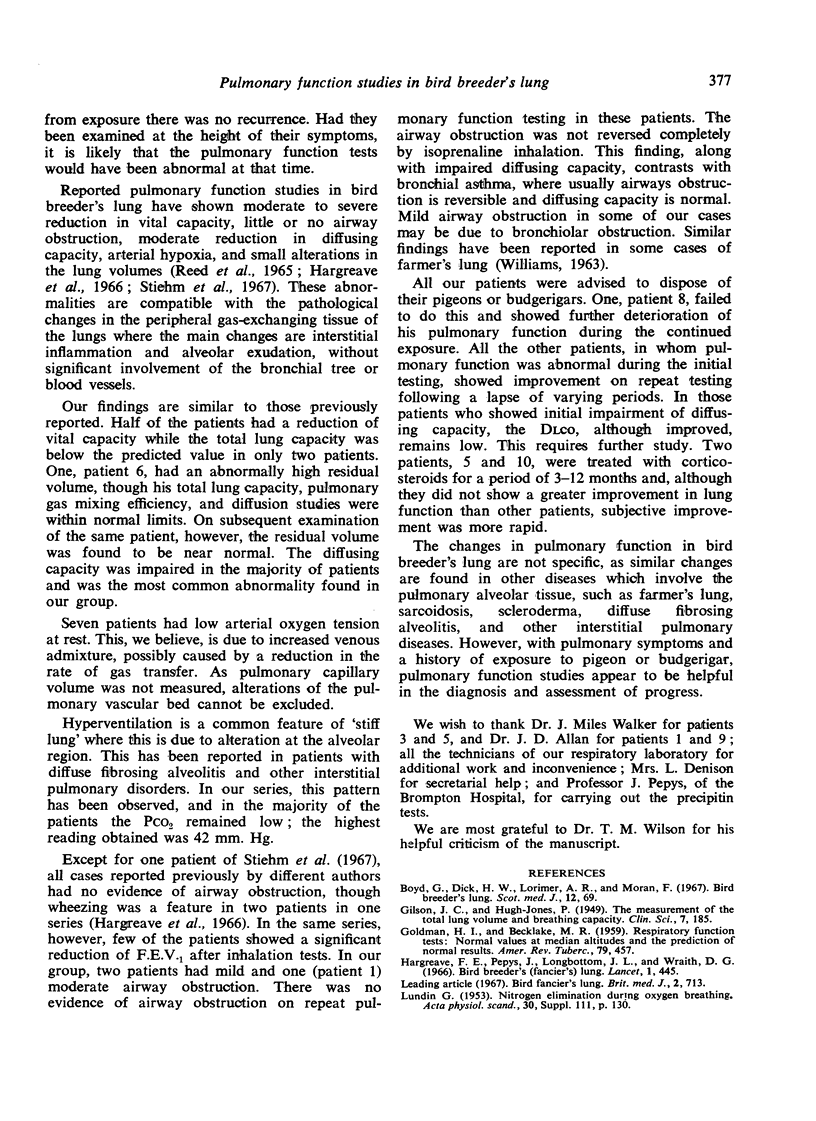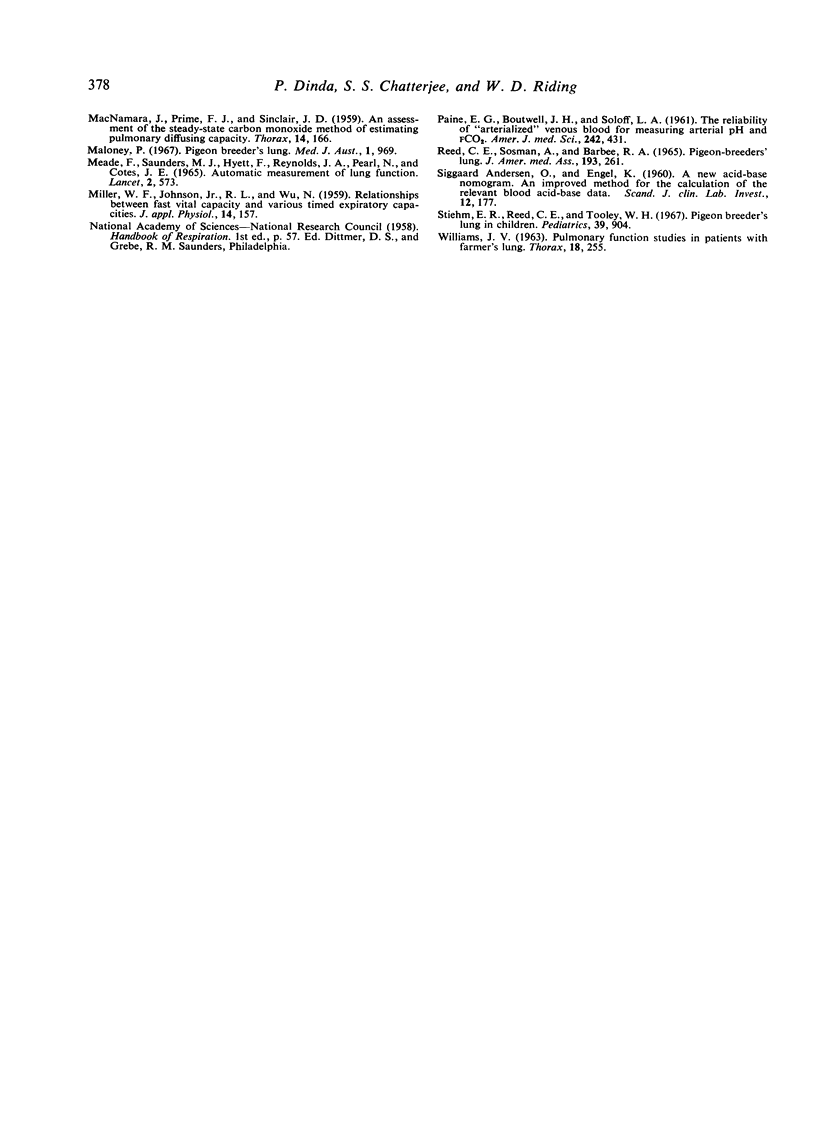Abstract
Pulmonary function studies were performed at the time of diagnosis in 10 patients, aged between 11 and 51 years, with bird breeder's lung due to exposure of between 9 months and 42 years. The studies were repeated after a varying interval in nine of these patients, following removal from exposure. In initial tests, diffusing capacity was impaired in eight patients and the arterial oxygen tension at rest was below 80 mm. Hg in seven. Five patients had a low vital capacity and three showed evidence of airway obstruction. One patient continued to breed pigeons, against medical advice, and his pulmonary function, repeated after nine months, showed further deterioration. The others with abnormal pulmonary function showed significant improvement on repeat studies. Pulmonary function studies appear to be helpful in the diagnosis, irrespective of radiographic changes, and in the follow-up of patients.
Full text
PDF




Selected References
These references are in PubMed. This may not be the complete list of references from this article.
- ANDERSEN O. S., ENGEL K. A new acid-base nomogram. An improved method for the calculation of the relevant blood acid-base data. Scand J Clin Lab Invest. 1960;12:177–186. doi: 10.3109/00365516009062420. [DOI] [PubMed] [Google Scholar]
- GOLDMAN H. I., BECKLAKE M. R. Respiratory function tests; normal values at median altitudes and the prediction of normal results. Am Rev Tuberc. 1959 Apr;79(4):457–467. doi: 10.1164/artpd.1959.79.4.457. [DOI] [PubMed] [Google Scholar]
- Hargreave F. E., Pepys J., Longbottom J. L., Wraith D. G. Bird breeder's (fancier's) lung. Lancet. 1966 Feb 26;1(7435):445–449. doi: 10.1016/s0140-6736(66)91454-1. [DOI] [PubMed] [Google Scholar]
- LUNDIN G. Nitrogen elimination during oxygen breathing. Acta Physiol Scand Suppl. 1953;111:130–143. [PubMed] [Google Scholar]
- MACNAMARA J., PRIME F. J., SINCLAIR J. D. An assessment of the steady-state carbon monoxide method of estimating pulmonary diffusing capacity. Thorax. 1959 Jun;14:166–175. doi: 10.1136/thx.14.2.166. [DOI] [PMC free article] [PubMed] [Google Scholar]
- MILLER W. F., JOHNSON R. L., Jr, WU N. Relationships between fast vital capacity and various timed expiratory capacities. J Appl Physiol. 1959 Mar;14(2):157–163. doi: 10.1152/jappl.1959.14.2.157. [DOI] [PubMed] [Google Scholar]
- Maloney P. Pigeon breeder's lung. Med J Aust. 1967 May 13;1(19):969–972. [PubMed] [Google Scholar]
- Meade F., Saunders M. J., Hyett F., Reynolds J. A., Pearl N., Cotes J. E. Automatic measurement of lung function. Lancet. 1965 Sep 18;2(7412):573–575. doi: 10.1016/s0140-6736(65)90874-3. [DOI] [PubMed] [Google Scholar]
- REED C. E., BARBEE R. A. PIGEON-BREEDERS' LUNG: A NEWLY OBSERVED INTERSTITIAL PULMONARY DISEASE. JAMA. 1965 Jul 26;193:261–265. doi: 10.1001/jama.1965.03090040005001. [DOI] [PubMed] [Google Scholar]
- Stiehm E. R., Reed C. E., Tooley W. H. Pigeon breeder's lung in children. Pediatrics. 1967 Jun;39(6):904–915. [PubMed] [Google Scholar]
- WILLIAMS J. V. PULMONARY FUNCTION STUDIES IN PATIENTS WITH FARMER'S LUNG. Thorax. 1963 Sep;18:255–263. doi: 10.1136/thx.18.3.255. [DOI] [PMC free article] [PubMed] [Google Scholar]


